Unifi UAP LR vs UAP AC LR – Internet & Network Speed Comparison
Update: 12/17/2015 – Great news! I finally heard back from my Ubiquiti distributor and the Unifi AP AC Pro is expected to ship out within the week. Check back after the holidays to see the wireless transfer speeds of the Unifi AP AC Pro in comparison to the Unifi AP LR and the Unifi AP AC LR.
It feels like only yesterday when I wrote 150 Mbps vs 300 Mbps – Comparison of 802.11 N Wireless Networks. Nearly 3 years ago, I compared 2 Wireless N standards, which at the time were considered lightning fast. Around that same time, Ubiquiti rocked the networking world with their release of the affordable Unifi line of wireless access points. Until then, the average end-user was limited to “over the counter” networking products which combined a router, switch and access point into one device which often struggled to maintain network stability. Ubiquiti’s entire line of networking products, which included their line of Unifi wireless access points, allowed the average end-user to delve into the world of professional grade networking equipment at a price point that would forever change the networking world.
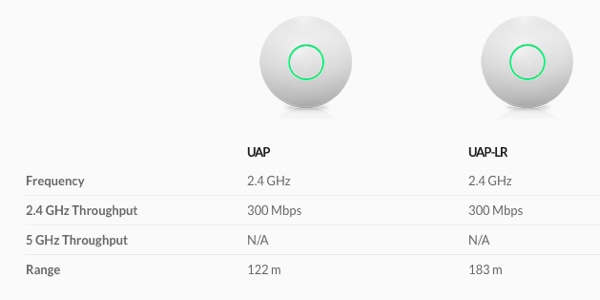
At the heart of the Unifi line of access points was the UAP LR. The Unifi AP LR not only boasted wireless speeds of up to 300 Mbps on the 2.4 GHz band, but did so with a radius of up to 600 ft. Above all, Ubiquiti was able to incorporate these impressive specifications into a device that was under $100. Everyday end-users with large homes and offices were now able to easily blanket their entire area with a fast wireless network simply by incorporating just one of these access points into their existing network. For almost three years now, the Unifi line of access points have been the backbone in all of the wireless networks my company has designed and implemented. Jump forward to present day and after much anticipation, Ubiquiti has finally released their new line of wireless AC access points.
.

The new Unifi AP AC product line boasts wireless network speeds of up to 1300 Mbps on the 5 GHz band. With the overwhelming success of the original Unifi line of wireless access points, I quickly pre-ordered (back in September of 2015) two of the new wireless AC access points, the UAP AC LR as well as the faster UAP AC PRO. With the release of the new line of wireless access points, it only seemed fitting that I do a comparison to showcase the speed difference between the old and new Unifi product lines.
.
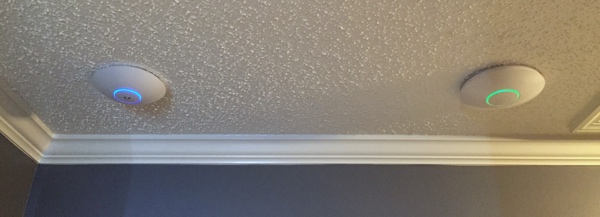
Unfortunately, due to extremely high demand for these wireless access points, I have only received the UAP AC LR and I anxiously await the delivery of the UAP AC PRO. However, until then, a comparison between the UAP LR and the UAP AC LR will have to suffice. (Once I receive the UAP AC PRO, I will post an update with both Internet Speed & File Transfer Speed.)
.
System Specifications of Test Computer

All comparison tests were performed on a Dell Inspiron laptop running Windows 10 Professional with 8 Gigabytes of RAM…
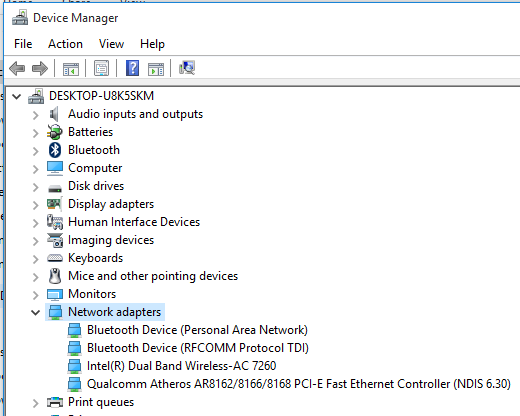
…an Intel Wireless-AC 7260 network card…
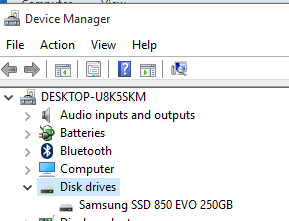
…as well as a 250 GB Samsung 850 EVO SSD hard drive.
.
Network Components
1) Ubiquiti EdgeRouter Lite – This router delivers 1 million packets per second routing performance in a compact sub $100 unit.
2) Netgear ProSafe GS116NA – A 16-Port Gigabit Ethernet Switch to which all networking devices attach to the network via CAT 6 Ethernet cabling.
3) Unifi UAP LR – This wireless N 300 Mbps access point is connected to the Netgear Gigabit Switch and controls the 1st of the 2 available wireless networks in my office. This access point can transmit data at the rate of 300 Mbps and is backward compatible to previous 802.11 standards on the 2.4 GHz band.
4) Unifi UAP AC LR – This wireless AC access point is connected to the Netgear Gigabit Switch and controls the 2nd of the 2 available wireless networks in my office. This access point can transmit data at the rate of 867 Mbps and is backward compatible to previous 802.11 standards on the 5GHz band. The Unifi UAP AC LR has dual band capability, though for the tests, only the 5 GHz band was utilized in order to demonstrate the maximum speed difference between the access points.
.
The Speed Tests
Two tests were performed on each access point from a distance of 25 ft. The first test was an internet speed test using SpeedTest.Net to determine if a bottleneck existed with the older Unifi AP LR access point and my available internet connection. The second test determined the average file transfer speed on the 2 access points with an identical 1 gigabyte file transfer.
Test 1 – Internet Speed Test
Unifi AP LR

Ubiquiti Unifi AP LR Internet Speed Test on SpeedTest.Net
.
Unifi AP AC LR

Ubiquiti Unifi AP AC LR Internet Speed Test on SpeedTest.Net
.
According to my Internet Service Provider, I should be receiving a download speed of 90 Mbps with an upload speed of 40 Mbps. While fast when it was released in 2013, the Unifi AP LR is not able to deliver the full bandwidth of my internet connection. While the difference in upload speed is negligible, the Unifi AP AC LR saw an increase of 30.44 Mbps over the older Unifi AP LR. Now onto the 1 Gigabyte file transfer test.
.
1 Gigabyte File Transfer
Unifi AP LR
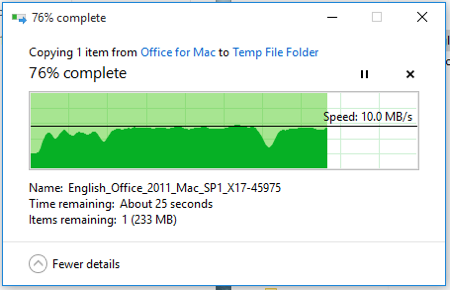
Unifi AP LR – 1 Gigabyte File Transfer
.
Unifi AP AC LR
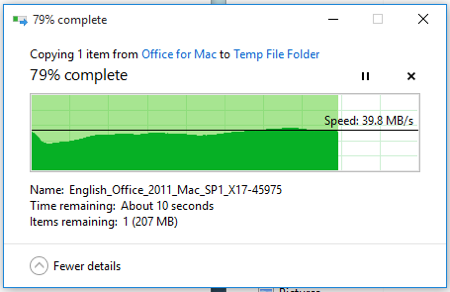
Unifi AP AC LR – 1 Gigabyte File Transfer
.
The Unifi AP AC LR saw an average file transfer speed of roughly 39.8 MB/s, nearly 4 times faster than that of the older Unifi AP LR which averaged only 10 MB/s.
For over 16 years, I have told my clients to run a hard wired connection within their homes & offices to deliver the fastest and most reliable network connection. The fast network data transfer speed as well as the rock solid reliability that comes with a hard wired network is a must for any business. However, sometimes it is not feasible to run Ethernet cabling to all of your networked devices. While a hard wired Ethernet connection is always best, the advancement of wireless access points like the new Unifi AC LR allows the everyday end-user to broadcast fast and reliable wireless network connections to the most remote areas of their home or office.
Support Our Blog by Visiting Our Sponsors
Want to know how to install the UniFi AP AC LR on your Verizon FiOS router? Click the link below…
Boost Verizon FiOS Wireless Network Signal – UniFi AP
.
Tags: unifi,ap,uap,ac,lr,ubiquiti,speed,internet,comparison,wireless,access,point,uap ac pro
Have any questions or comments? Leave a reply!

Hi Sir,
Thank you for this information.
About this statement
“This access point can transmit data at the rate of 867 Mbps and is backward compatible to previous 802.11 standards on the 5GHz band. The Unifi UAP AC LR has dual band capability, though for the tests, only the 5 GHz band was utilized in order to demonstrate the maximum speed difference between the access points.”
So it is not backwards compatible on the 2.4GHz band?
I need this info since most of our wireless laptops can only do 2.4GHz.
Regards,
Edward
Yes, the Unifi AP AC LR access point is dual band. You can create 2 separate networks…one on the 2.4GHz band and one on the 5.2 GHz band. For the purpose of the review, I only used the 5.2 GHz to showcase the speed difference between the old and new LR access points.
Hi Sir, Thank you for this information.
i have one question can i connected wirless AC LR with unifi LR
I apologize but I am not sure I understand your question. Are you looking to add another access point (the AC LR) to a network with an existing access point? (a unifi LR)
One question, comparing ur ap lr eith the ac lr using both the 2.4ghz vand, did u obtain the same results? Or was the ac equally good compared to the ap at 2.4ghz?
The internet download and upload speed was the same. However, file transfers are a bit faster with the AC LR due to the fact that the connection on the access point is gigabit as well as the faster N standard. (300 on the AP LR vs 450 on the AC LR)
Are you using wireless N for both, or AC for the faster one?
I utilized AC for the faster access point (UAP AC LR) to show off the speed difference between the two standards.
So the comparison is apples and oranges. Is the performance the same for both at N?
Absolutely apples to oranges…but this was clearly mentioned in the article. i.e.: For one…The ethernet port on the AC LR is only 10/100 while the ethernet port on the AP AC LR is gigabit. That alone will provide a significant difference in performance between the two access points…but that is expected considering when each access point was released.